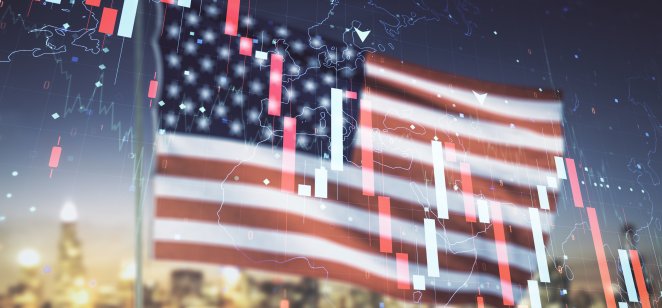
Consumers are growing worried about the prospects of a US recession, two years after a traumatic downturn caused by COVID-19.
Is the US in a recession as aggressive rate hikes force demand down, or will the country’s economy be able to weather a bumpy incoming economic storm?
What is a recession?
A recession is technically defined as two consistent quarters of negative growth in gross domestic product (GDP), suggesting an endemic issue in the economy tied to falling demand. It’s a crucial metric in assessing the health of an economy, with rising unemployment in the labour market typically following a contraction in GDP.
In the US though, a recession is announced by the National Bureau of Economic Research’s (NBER) Business Cycle Dating Committee, made up of a group of economists. They use a variety of metrics, including GDP, unemployment, personal income and personal consumption to determine when a significant drop in economic activity has occurred.
Recessions can be caused by factors both external – like the global financial crash of 2007 – and internal to a domestic economy, like a rise in interest rates, a symptom of a cyclical downturn in economic activity.
Rate hikes can push an economy into recession by increasing the price of servicing debts like credit cards and mortgages, as well as borrowing costs and expenses for businesses. That…



























































